Although there will be bird movement through the site for the next two weeks (at least), you will notice very quickly that the big flocks and variety have gone. There has been a definite and quick decline in the number of migrants that were around just a couple of days ago: Cedar Waxwings, Yellow-rumped Warblers, White-throated Sparrows (sparrows generally) were negligible over the weekend.
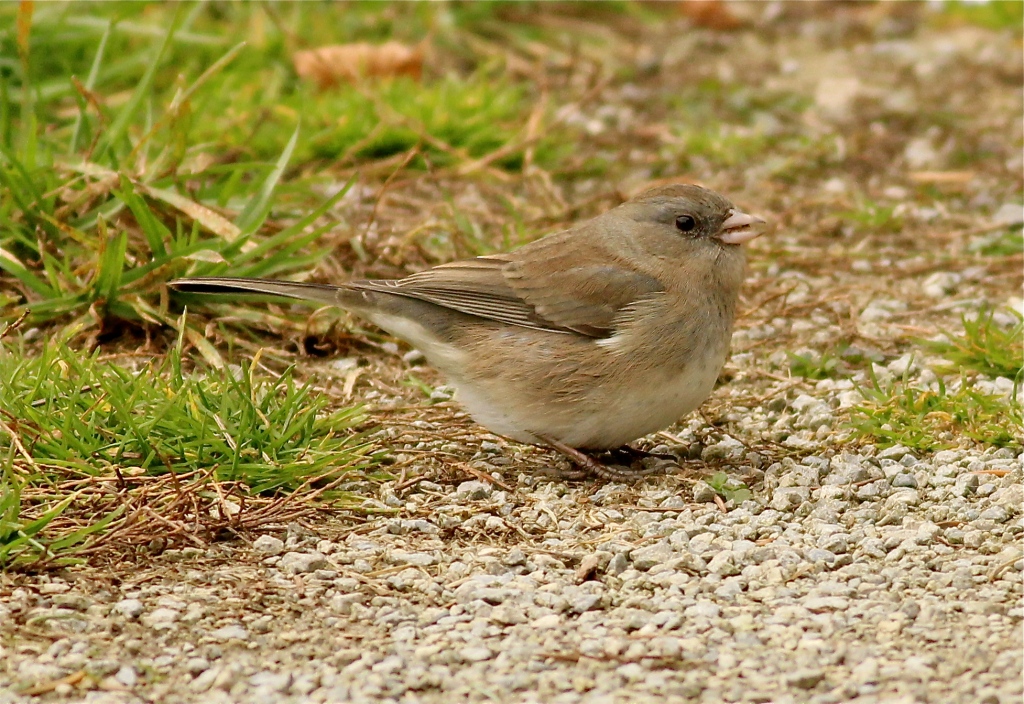
Female Dark-eyed Junco. Some juncos will spend the Winter at Ruthven, taking advantage of the bountiful food provided by the feeders. -E. Wainright
Their place is being taken by juncos, American Tree Sparrows and the ubiquitous American Goldfinch. If it wasn’t for goldfinches our daily banding totals would be much smaller. Today I saw 5 Tundra Swans flying over, headed SW for the marshes of Long Point Bay. These were followed by a Common Loon heading due S. The north is emptying. But I also saw 2 late Tree Swallows! Whatever could they be finding to feed on!?
And of course there’s Northern Saw-whet Owls. We’re having our second best owling season – and we’ve still got 2 weeks, at least, to go. Friday night we came up with 14 owls and another 8 last night. This brings our total up to 56!
October 25th; Banded 59:
14 Northern Saw-whet Owls (from the night before)
1 Black-capped Chickadee
2 Ruby-crowned Kinglets
5 Hermit Thrushes
5 Northern Cardinals
2 American Tree Sparrows
2 White-throated Sparrows
12 Dark-eyed Juncos
1 Purple Finch
15 American Goldfinches
DET’s: 31 spp.
October 26th; Banded 41:
8 Northern Saw-whet Owls (from the night before)
1 Black-capped Chickadee
1 Golden-crowned Kinglet
2 Hermit Thrushes
3 Northern Cardinals
2 Fox Sparrows
5 Dark-eyed Juncos
19 American Goldfinches
DET’s: 39 spp.
Owling Photo Gallery:
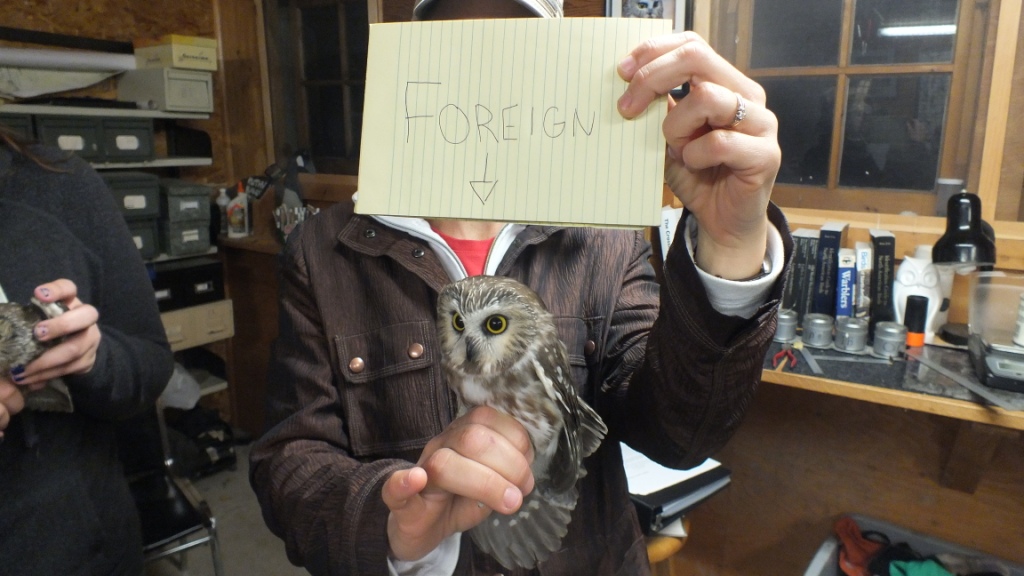
One of two foreign retraps caught over the weekend. One was banded at Prince Edward Point BO in 2012; we’re waiting for information on the second one.
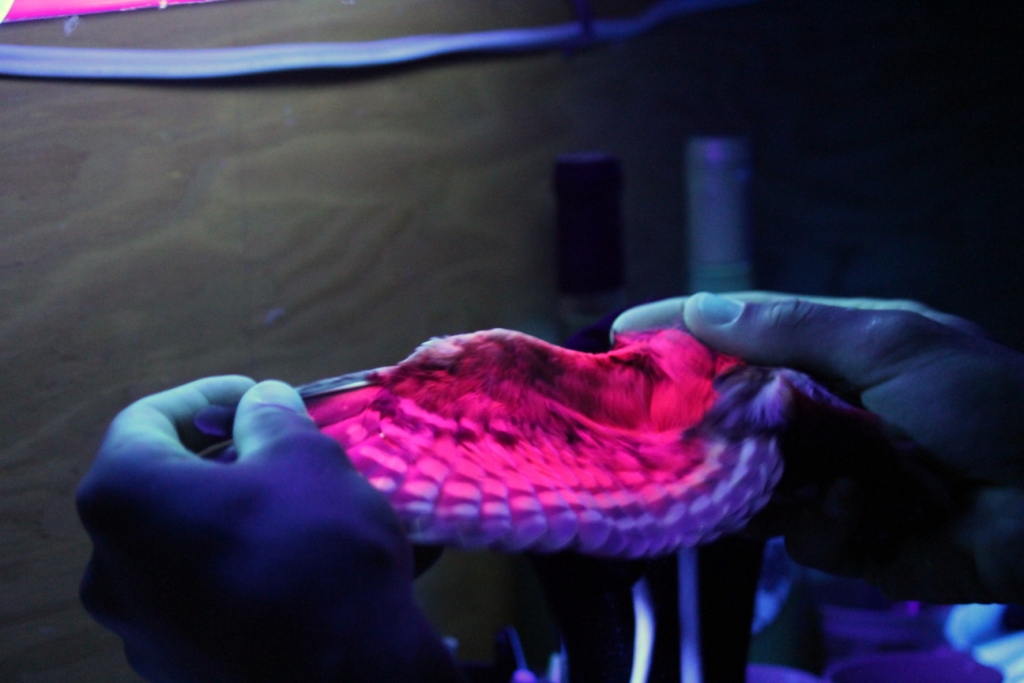
Young Saw-whet Owl feathers glow pink under a white light. As all of these are pink we can determine that this is a young or juvenile bird. -K. Hyde
Rick
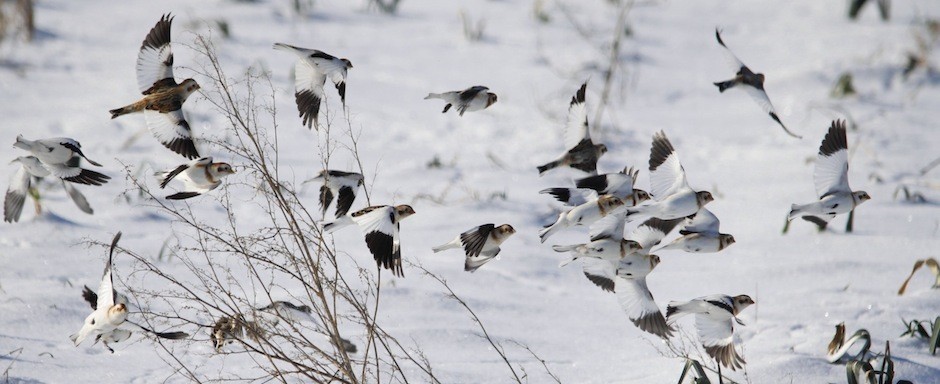
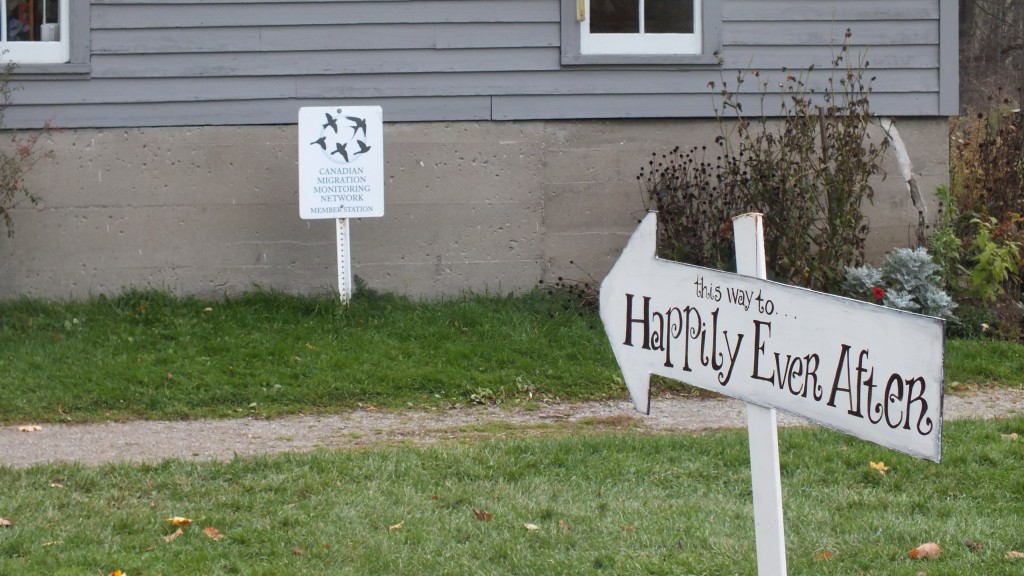
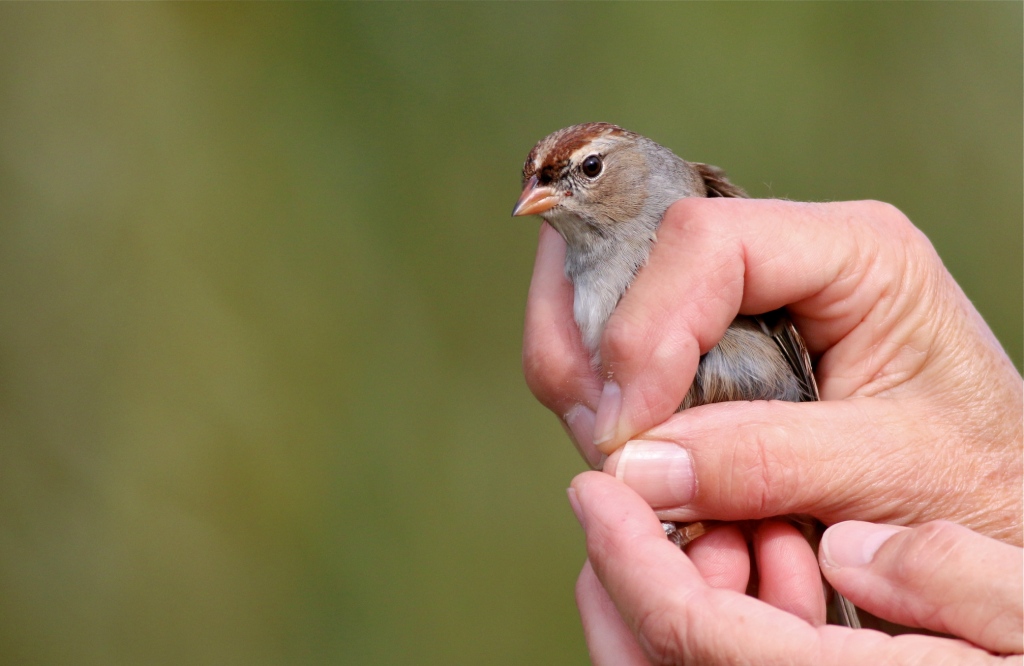
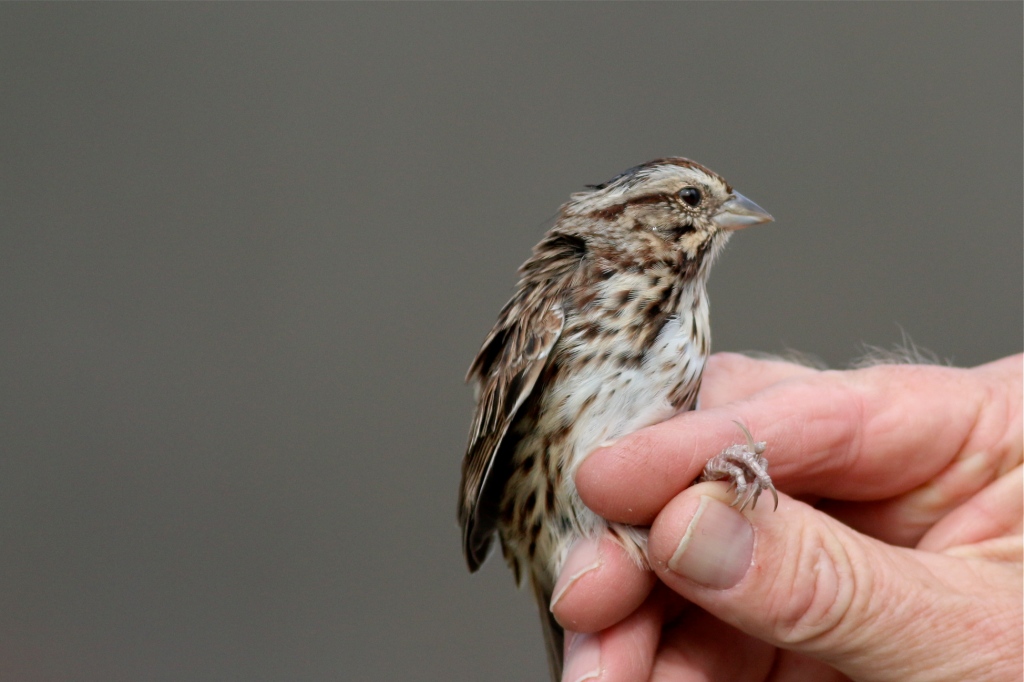
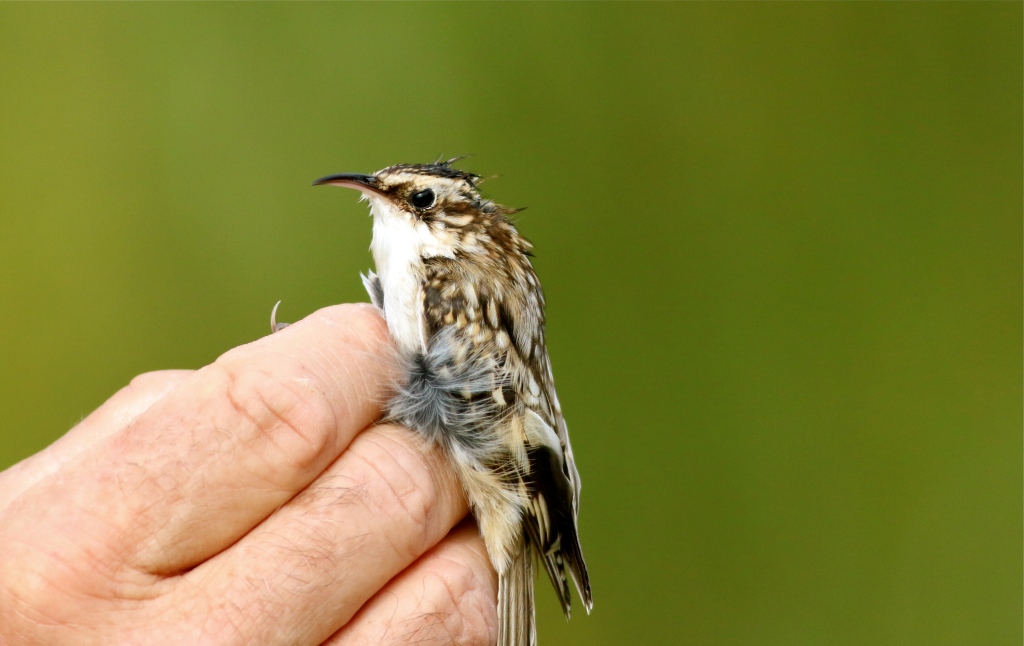
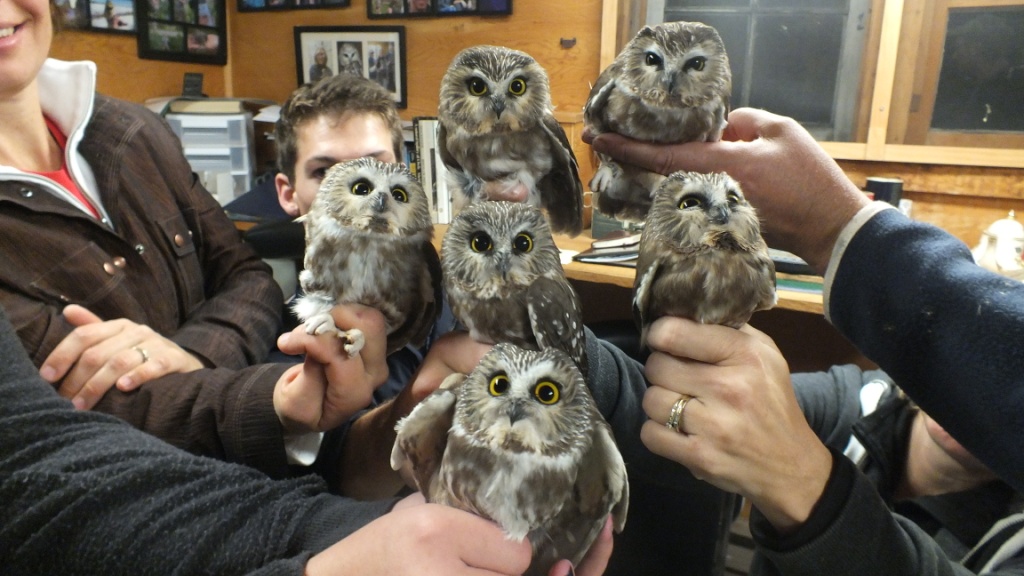
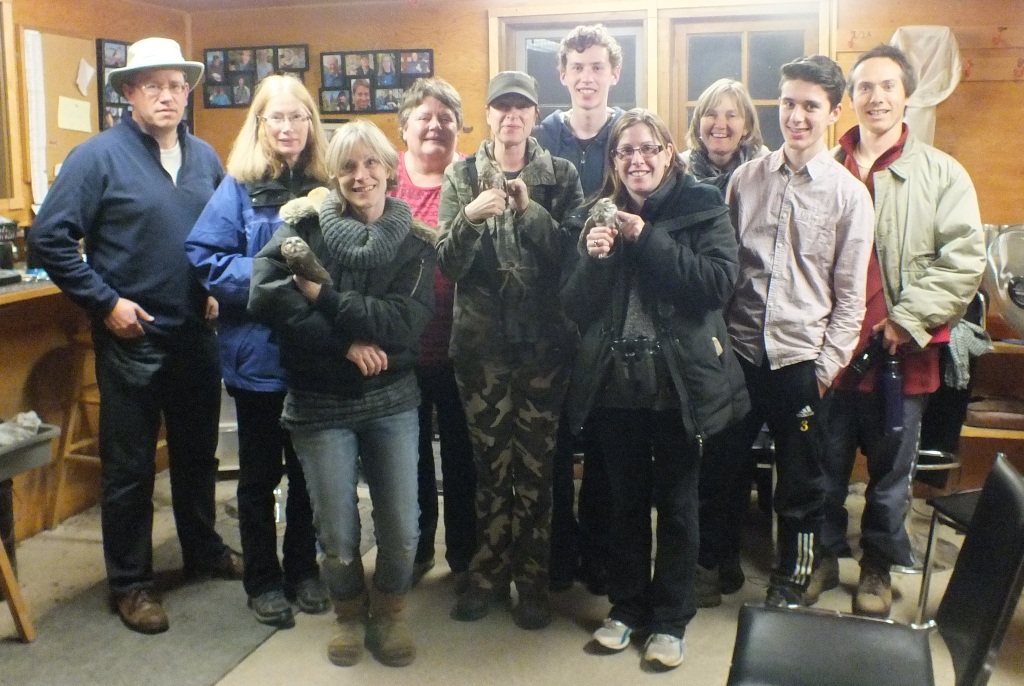
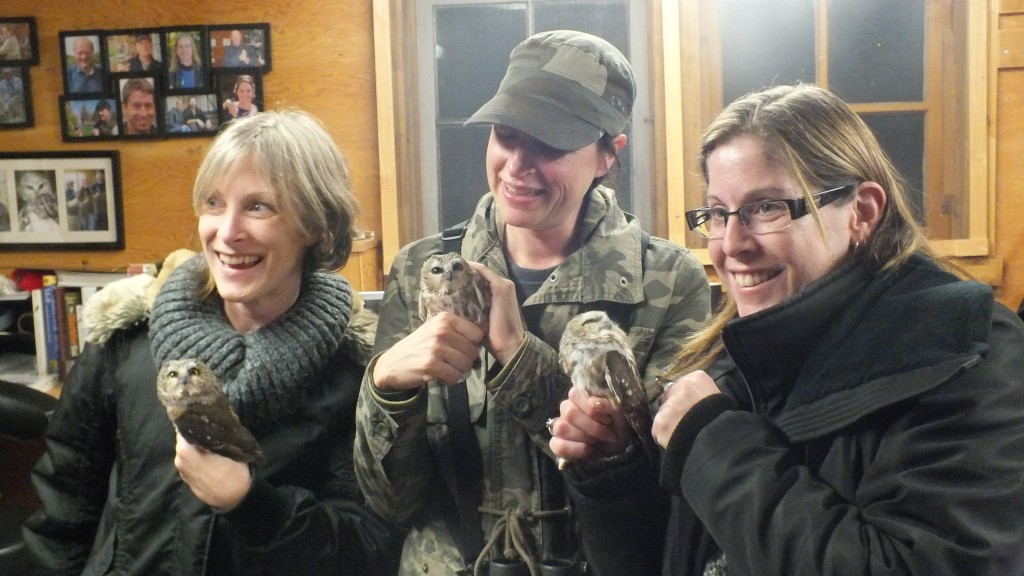
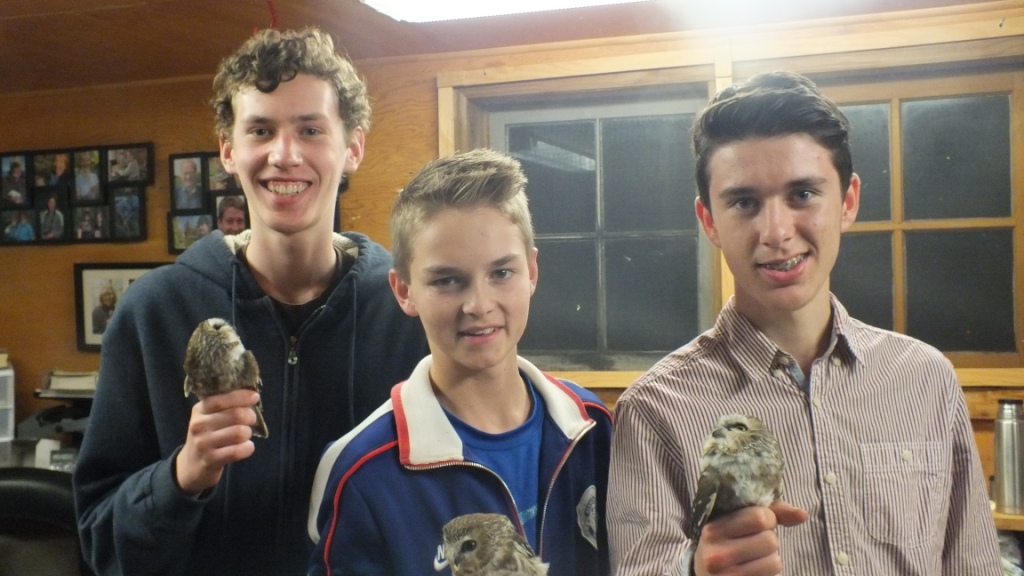
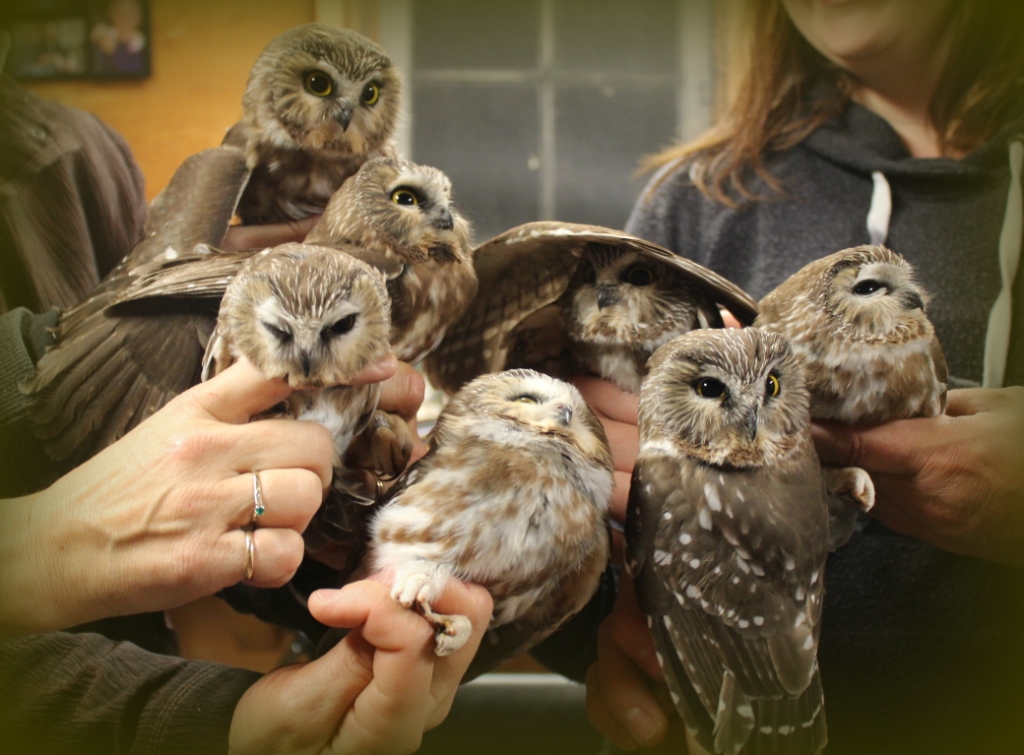
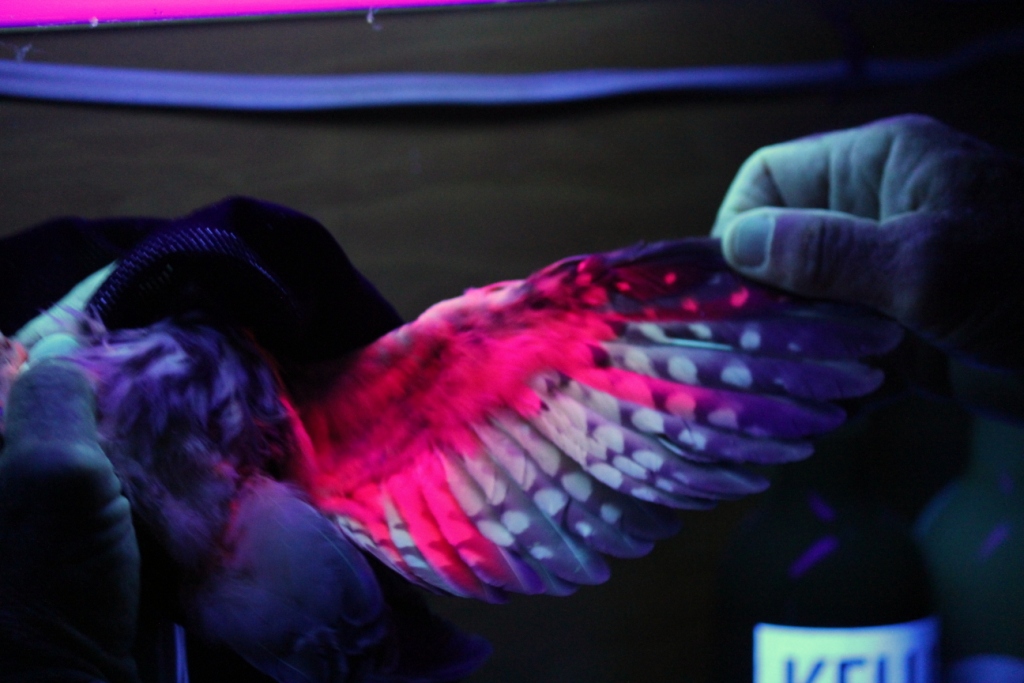
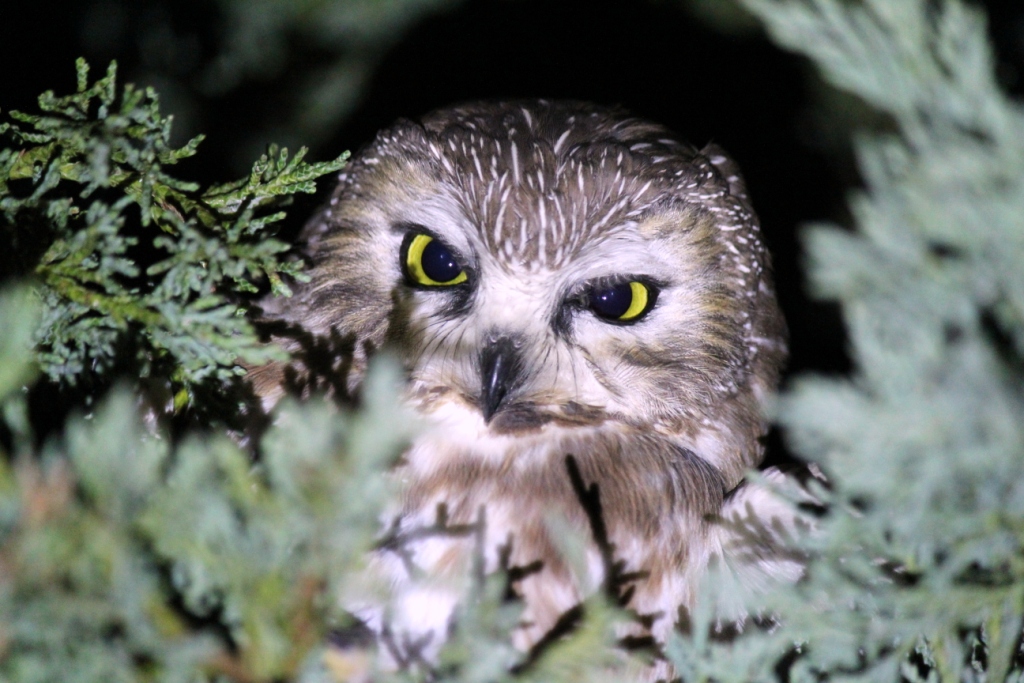
As always, a great post Rick. With what we know about the abilities of birds to see in colour ranges beyond our perceptions, what’s chances that the Owls actually see the colours revealed under the light? Pretty wonder-full if the brown owls are “really” vivid pink and blue.